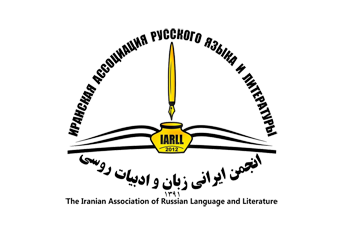RUSSIAN LANGUAGE IN THE DIGITAL SPACE OF KYRGYZSTAN
DOI:
https://doi.org/10.61186/iarll.24.2Keywords:
Digital Transformation, Digitalization, Technology, Russian Language, Kyrgyz Language, Digital ResourcesAbstract
The article examines the role and place of local and world languages in the digital development of Kyrgyzstan, with a significant focus on the interaction between the Kyrgyz and Russian languages in promoting digital technologies within the social environment. The authors suggest that, in the era of digitalization, the most promising approach to introducing high technologies into priority sectors of Kyrgyzstan's socio-economic and scientific-educational spheres is through the Russian language. Consequently, analyzing the position and role of the Russian language in the digital space of modern Kyrgyzstan emerges as a pressing issue. The article provides an overview of various digital technologies being implemented in Kyrgyzstan and analyzes the features of using both Russian and Kyrgyz languages within these technologies. It notes that the Russian language maintains a stable position in Kyrgyzstan's digital landscape, serving as a support and launching pad for integrating digital technologies into local languages. Using sociolinguistic survey methods, the authors analyze citizens' language preferences to access global digital resources and address everyday challenges.
Extended abstract:
The article discusses the role and place of local and global languages in the digital development of Kyrgyzstan, with a significant focus on the interaction between the Kyrgyz and Russian languages in promoting digital technologies in the social sphere. The authors hypothesize that, in the era of digitalization, the Russian language currently serves as the most effective tool for introducing advanced technologies into the socio-economic, scientific-educational, and existential spheres of Kyrgyzstan's life. At the same time, they emphasize the decisive role of the Russian language in gradually preparing local languages to fulfill these functions.
The relevance of this research lies in the fact that, in the era of globalization, digital transformation processes permeate all areas of human activity. Since the development of digital technologies is primarily conducted in global languages, which limits access for speakers of smaller languages, the issue of translating this knowledge into minority languages, including Kyrgyz, becomes critical. Under these circumstances, for minority communities, proficiency in one of the global languages becomes a gateway to the global information space, the values of world culture, and modern technologies. For Kyrgyzstan, as for many post-Soviet countries, it has historically turned out that Russian has become such a communicative code—familiar and accessible to many speakers of local languages. In this regard, analyzing the position and role of the Russian language in the digital space of modern Kyrgyzstan presents significant scientific interest.
The article provides an overview of some digital technologies being implemented in Kyrgyzstan. It notes that, in the digital space of Kyrgyzstan, the Russian language maintains relatively stable positions, serving as a foundational base and a kind of locomotive for advancing local languages and expanding their functions as the metalanguage of digital technologies.
The scientific novelty of the research lies in the fact that, for the first time, sociolinguistic surveys were used to identify the language preferences of Kyrgyz citizens in choosing the interface language of digital resources for solving their daily tasks. More than 3,000 Kyrgyz citizens aged 14 to 40 from all regions of Kyrgyzstan participated in the sociolinguistic survey. The choice of respondents from this age range is explained by the fact that they represent the main socially active segment of the population, whose language preferences generally reflect the state and leading trends in the development of the linguistic situation.
As a result of the research, the authors conclude that the Russian language has been and remains the primary metalanguage for the communicative support of digital technologies in Kyrgyzstan. The predominant use of Russian is explained by its well-developed system of concepts and terms for digital resources, which is understandable and ingrained in the minds of many citizens of the country. Thanks to the Russian language, Kyrgyz citizens are actively integrating into digital technologies and the new opportunities of the digital world.
In this context, Kyrgyz-Russian bilingualism, which is widely prevalent in Kyrgyzstan, becomes particularly relevant. It opens up broad opportunities for shaping a new generation of individuals who cherish their native language and culture while also possessing another language as an effective means of communication and understanding the world in areas of life where the native language shows less effectiveness in processes of learning and seeking information in the digital space.
Downloads
Published
How to Cite
Issue
Section
License
Copyright (c) 2024 Issledovatel'skiy Zhurnal Russkogo Yazyka I Literatury

This work is licensed under a Creative Commons Attribution 4.0 International License.
![]()
"Creative Commons Attribution 4.0 International (CC-BY 4.0)"


